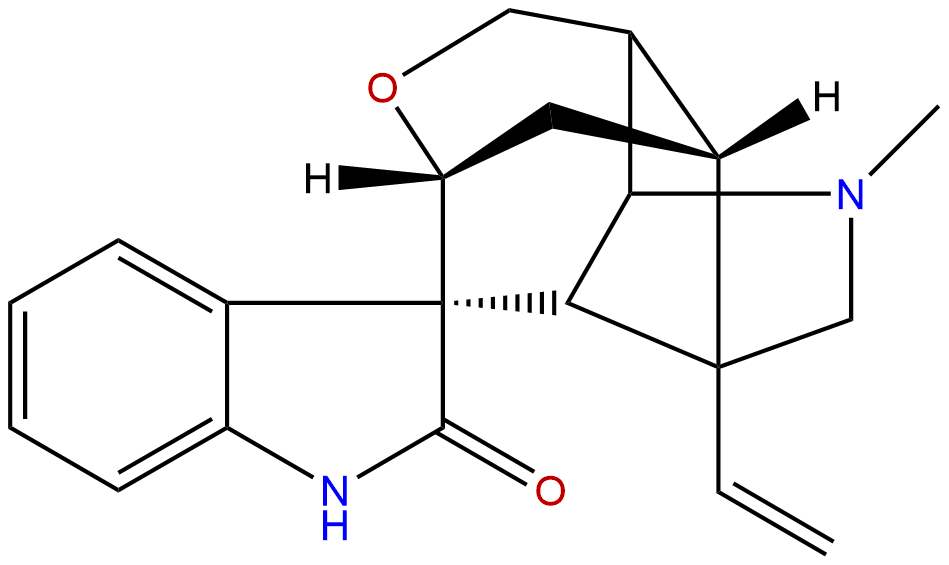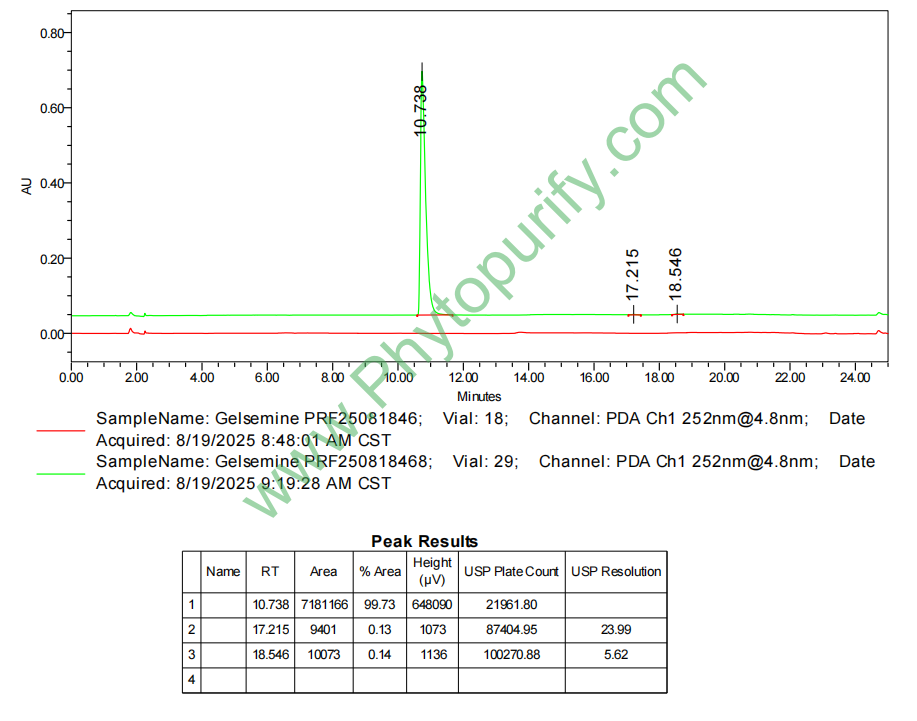
GelsemineCAS No.:509-15-9
|
||||||||||
 |
|
|
||||||||

| Catalogue No.: | BP0629 |
| Formula: | C20H22N2O2 |
| Mol Weight: | 322.408 |
Synonym name:
Catalogue No.: BP0629
Cas No.: 509-15-9
Formula: C20H22N2O2
Mol Weight: 322.408
Botanical Source: Alkaloid from Gelsemium sempervirens, Gelsemium elegans and Mostuea stimulans (Loganiaceae)
Purity: 95%~99%
Analysis Method: HPLC-DAD or/and HPLC-ELSD
Identification Method: Mass, NMR
Packing: Brown vial or HDPE plastic bottle
Can be supplied from milligrams to grams.
For Reference Standard and R&D, Not for Human Use Directly.
Inquire for bulk scale.
Description:
Gelsemine is a highly toxic compound and may be a glycine receptor agonist. Gelsemine has antitumor, anti-hyperlipidemic,anti-oxidative activities,it also has marked antinociception in inflammatory, neuropathic and bone cancer pains without inducing antinociceptive tolerance.
References:
J Asian Nat Prod Res. 2010 Sep;12(9):731-9.
Antitumor activity of two gelsemine metabolites in rat liver microsomes.
Gelsemine is one of the major alkaloids from Gelsemium elegans Benth., which has been used as an antitumor remedy in clinic.
METHODS AND RESULTS:
In this paper, metabolism of Gelsemine has been investigated in vitro in phenobarbital-treated rat liver microsomes. The metabolites of Gelsemine were separated and evaluated using the flash silica gel column, preparative HPLC, using NMR and MS methods. According to the spectral data, two metabolites, M1 and M2, were identified as 4-N-demethylGelsemine and 21-oxoGelsemine, respectively. By the MTT method in vitro, the antitumor activities between Gelsemine and its metabolites were compared in the HepG2 and HeLa cell lines. Moreover, the main metabolic pathway was further proposed.
Cell Biochem Biophys. 2015 Jan;71(1):337-44.
Anti-hyperlipidemic and anti-oxidative effects of gelsemine in high-fat-diet-fed rabbits.
The present study investigated the anti-hyperlipidemic proprieties of a natural alkaloid, Gelsemine, in a high-fat-fed rabbit model.
METHODS AND RESULTS:
Animals were randomly divided into five groups and fed normal diet, hypercholesterolemic diet (1% cholesterol), or hypercholesterolemic diet (1% cholesterol) supplemented with Gelsemine (1, 5, or 25 mg/kg). After 60 days, serum concentrations of total cholesterol (TC), LDL-C, HDL-C, triglycerides, apolipoproteins A and B, SGOT, SGPT, glucose, and insulin were measured in all experimental groups. Hypercholesterolemic diet resulted in significantly elevated levels of TC, TG, LDL-C, SGOT, and SGPT, and reduced HDL-C compared to the normocholesterolemic diet group. Gelsemine treatment significantly improved lipid profile parameters, affected by hyperlipidemia, while having no effect on the levels of apolipoproteins, glucose, and insulin. Furthermore, Gelsemine treatment decreased hyperlipidemia-induced oxidative stress in a dose-dependent manner, as indicated by the increased activity of superoxide dismutase and catalase, and reduction in serum nitric oxide, and malondialdehyde concentrations in hyperlipidemic animals that received Gelsemine supplementation.
CONCLUSIONS:
Dietary supplementation with Gelsemine may, therefore, reverse the effect of the lipogenic diet on lipid profile and hepatic enzymes in hyperlipidemic rabbits, and protect tissues from oxidative stress, caused by high-fat diet.
HPLC of Gelsemine
